Research Teams in Group
Biomedicine and signal processing
Analysis and processing of audio signals
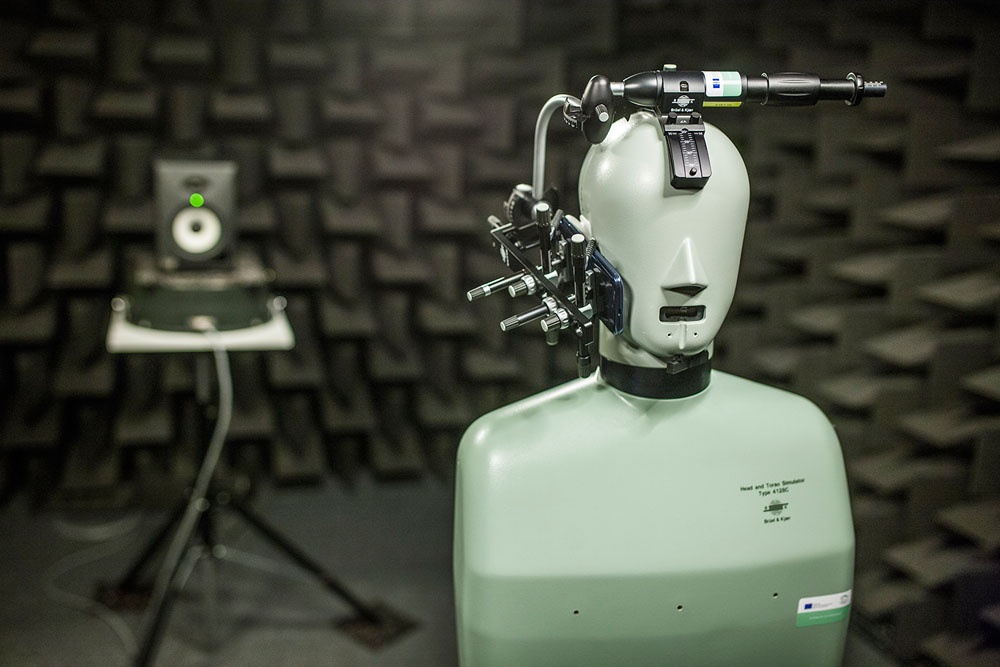
Group website: https://www.utko.fekt.vut.cz/en/analysis-and-processing-audio-signals
We are engaged in research of methods of reconstruction of damaged sound signals and archival sound records, use of deep neural networks for obtaining information from sound signals, research of methods of analysis of sound signals and their use in acoustic, electroacoustic and noise measurements, modeling of electroacoustic and audio systems and research of analysis and synthesis of sound for virtual reality.
Main research activities
- reconstruction of damaged audio signals
- reconstruction of archive audio signals
- compression of audio signals
- obtaining information from music signals
- measurement, analysis and identification of noise sources
- measurements in acoustics and electroacoustics
- analysis and modeling of electroacoustic and audio systems
- sound for virtual and augmented reality
Main research results
- MOKRÝ, O.; RAJMIC, P. Approximal operator with application to audio inpainting. SIGNAL PROCESSING, 2020, vol. 179, no. 1, p. 1-8. ISSN: 0165-1684.
- MOKRÝ, O.; RAJMIC, P. Audio Inpainting: Revisited and Reweighted. IEEE/ACM TRANSACTIONS ON AUDIO, SPEECH AND LANGUAGE PROCESSING, 2020, no. 28, p. 2906-2918. ISSN: 2329-9290.
- ZÁVIŠKA, P.; RAJMIC, P.; OZEROV, A.; RENCKER, L. A Survey and an Extensive Evaluation of Popular Audio Declipping Methods. IEEE Journal of Selected Topics in Signal Processing, 2020, vol. 15, no. 1, p. 5-24. ISSN: 1941-0484.
- ŠTILLOVÁ, K.; KISKA, T.; KORIŤÁKOVÁ, E.; STRÝČEK, O.; MEKYSKA, J.; CHRASTINA, J.; REKTOR, I. Mozart effect in epilepsy: Why is Mozart better than Haydn? Acoustic qualities-based analysis of SEEG. European Journal of Neurology, 2021, vol. 1, no. 1, p. 1-17. ISSN: 1351-5101.
- ZÁVIŠKA, P.; RAJMIC, P.; MOKRÝ, O. Audio declipping performance enhancement via crossfading. SIGNAL PROCESSING, 2021, vol. 192, no. 1, p. 1-5. ISSN: 0165-1684.
- MIKLÁNEK, Š.; IŠTVÁNEK, M.; SMÉKAL, Z.: The MemoVision software. URL: https://github.com/stepanmk/memovision.
Artificial intelligence, data processing and analysis

Group website: https://www.utko.fekt.vut.cz/en/artificial-intelligence-data-processing-and-analysis
We are researching advanced artificial intelligence methods for big data analysis and acceleration of computations on our high-performance supercomputers. Our technologies are able to offer solutions to a range of problems from advanced visual quality control of products, through security and guarding of premises, predictive maintenance of various types of equipment, including power grids, and prediction of future behavior, including automation of complex processes control.
Main research activities
- Machine learning (research of new algorithms for machine learning and artificial intelligence)
- Big data (parallel and distributed algorithms for processing of large volumes of data)
- Computer vision (image content analysis, object detection and classification, object tracing, segmentation)
- Biomedicine (applications for e-health and telemedicine)
- Biometrics and anonymization (identification and verification of persons based on face recognition, advanced anonymization of faces, extraction of secondary biometric and non-biometric features - age, gender, etc.)
- 3D audio
Main research results
- BREGER, A.; ORLANDO, J.; HARÁR, P.; DÖRFLER, M.; KLIMSCHA, S.; GRECHENIG, C.; GERENDAS, B.; SCHMIDT-ERFURTH, U.; EHLER, M. On Orthogonal Projections for Dimension Reduction and Applications in Augmented Target Loss Functions for Learning Problems. Journal of Mathematical Imaging and Vision, 2020, vol. 62, no. 3, p. 376-394. ISSN: 1573-7683. (https://link.springer.com/article/10.1007/s10851-019-00902-2)
- KHAN, J.; KAUSHIK, M.; CHAURASIA, A.; DUTTA, M.; BURGET, R. Cardi-Net: A Deep Neural Network for classification of Cardiac disease using Phonocardiogram Signal. COMPUTER METHODS AND PROGRAMS IN BIOMEDICINE, 2020, vol. 219, no. 1, p. 1-11. ISSN: 0169-2607. (https://dl.acm.org/doi/10.1016/j.cmpb.2022.106727)
- Baghela, N;Dutta, M. K.;Burget, R. Automatic diagnosis of multiple cardiac diseases from PCG signals using convolutional neural network. COMPUTER METHODS AND PROGRAMS IN BIOMEDICINE, 2020, vol. 197, no. 12, p. 1-11. ISSN: 0169-2607. (https://www.sciencedirect.com/science/article/pii/S0169260720315832)
- GÓRRIZ, J.M.; MEKYSKA, J.; et al. Computational approaches to Explainable Artificial Intelligence: Advances in theory, applications and trends. Information Fusion, 2023, vol. 100, no. December 2023, p. 1-37. ISSN: 1872-6305. (https://www.sciencedirect.com/science/article/pii/S1566253523002610)
- JONÁK, M.; MUCHA, J.; JEŽEK, Š.; KOVÁČ, D.; CZÍRIA, K. SPAGRI-AI: Smart precision agriculture dataset of aerial images at different heights for crop and weed detection using super-resolution. AGRICULTURAL SYSTEMS, 2024, vol. 216, no. April 2024, p. 1-11. ISSN: 0308-521X. (https://www.sciencedirect.com/science/article/pii/S0308521X2400026X)
- JEŽEK, Š.; BURGET, R.; JONÁK, M.; KOLAŘÍK, M.; HAVLÍČEK, L.; SKOTÁK, M.: Defect Detection System; Painted metal parts defectoscopy. (used in Konica Minolta systems - https://www.vut.cz/en/rad/results/detail/187567#vysledek-187567)
- MYŠKA, V.; BURGET, R.: ČEPS ARTIC; ČEPS ARTIC, ČEPS ARTIC, software for energy grid monitoring URL: https://cz.energyhub.eu/en.
Bioinformatics and Systems Biology | BioSys_BUT
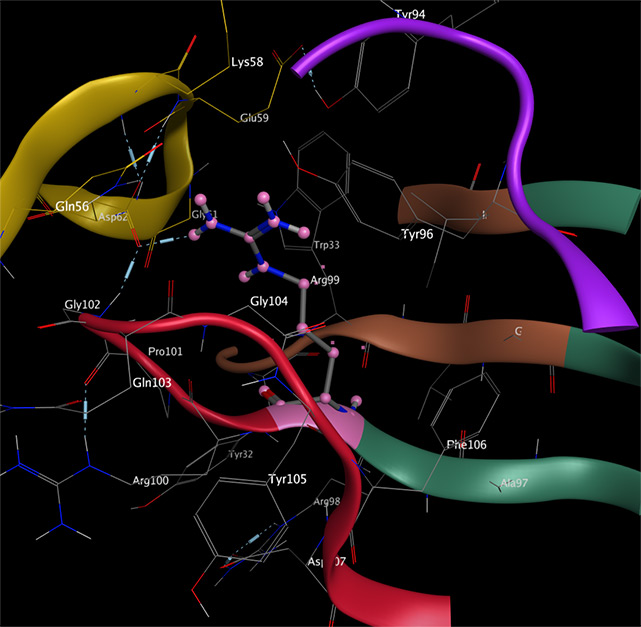
Leader: doc. Mgr. Ing. Karel Sedlář Ph.D.
Group website: https://www.ubmi.fekt.vut.cz/en/bioinformatics-and-systems-biology-lab-biosysbut
Our research team develops new computational tools for the analysis of omics data to perform rapid typing of bacteria, gene regulatory networks inference, or non-coding elements detection. We also focus on advanced and holistic analysis of microbial organisms, especially bacteria. In addition to pathogenic bacteria from the hospital environment associated with nosocomial infections, we focus on non-model species with biotechnological potential, particularly bioplastics or biofuel producers. Equally important areas of our research are the analysis of microbial communities, for example, those from the gut of farm animals, and the investigation of the relationship between biological activity and the structure of organic substances.
Main research areas:
- Processing data from NGS and TGS sequencing.
- Development of algorithms for the inference and analysis of biological regulatory networks.
- Computational tools for routine clinical microbiology and epidemiology.
- Genotyping of new bacterial strains and their functional system description.
- Analysis of microbial communities from various environments.
- Multi-target drug design using chemoinformatics approaches.
- Design and development of custom tools for qualitative and quantitative analysis of laboratory data.
Biomedical Signal Processing | BioSig_BUT
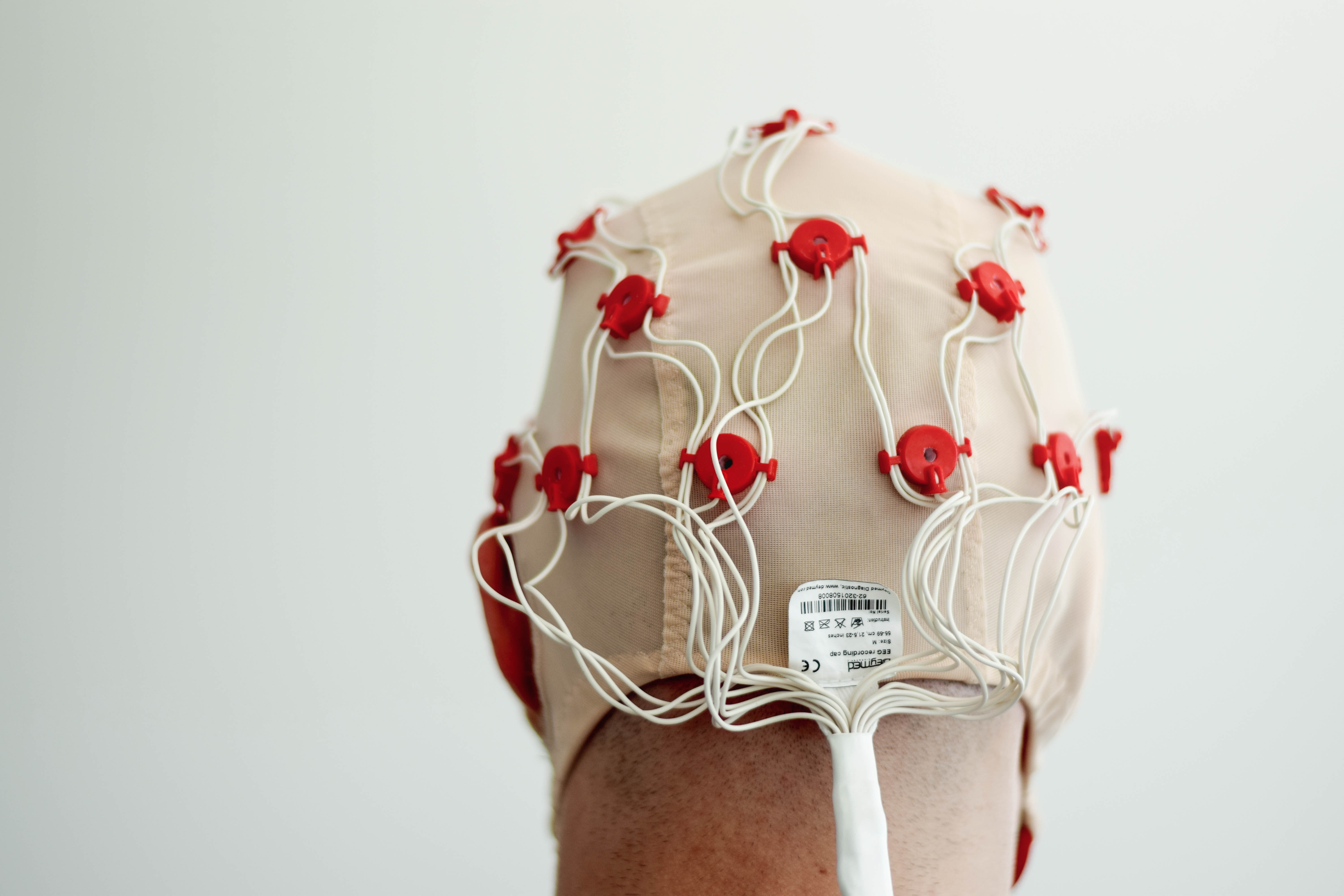
Leader: Ing. Andrea Němcová Ph.D.
Group website: https://www.ubmi.fekt.vut.cz/en/biomedical-signal-processing-group-biosigbut
We measure and analyze biological signals. Our main focus is the measurement and processing of both clinical and experimental cardiological data (electrocardiograms, photoplethysmograms). We also focus on the processing and analysis of data from wearable devices (smartphones, watches, and bands) to assess individuals' health status and activity levels. Additionally, we deal with the processing of multimodal data, such as for detecting sleep apnea, analyzing psychological conditions, detecting stress in drivers and soldiers, or evaluating athletes' performance.
Main research areas:
- Measurement and analysis of biosignals, including clinical biosignals.
- Development of diagnostic algorithms in cardiology, including the use of AI.
- Health and activity monitoring using smartphones and wearables.
- Assessment of stress in drivers and soldiers and determination of anxiety in phobic patients.
- Utilization of biosignals in biofeedback and virtual reality.
Bioengineering and Applied Biomaterials | BioEngiMat_BUT
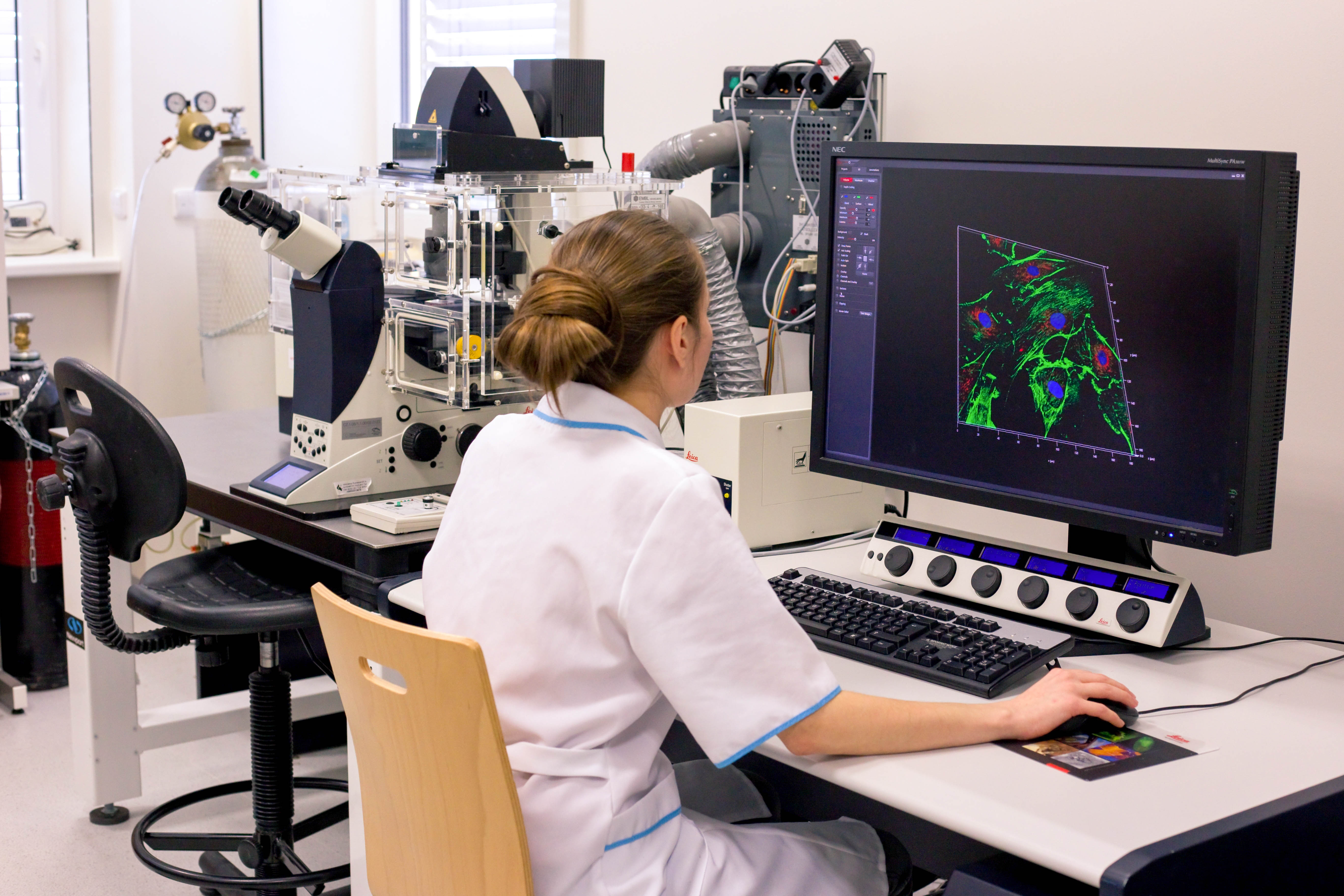
Leader: doc. Mgr. Zdenka Fohlerová Ph.D.
Group website: https://www.ubmi.fekt.vut.cz/en/lab-bioengineering-and-applied-biomaterials-bioengimatbut
Research group focuses on bio-materials in a broad sense, from the development of innovative bio-materials to the understanding of their interaction with cells to the conception of preparation of scaffolds, implants or 2D in vitro platforms with desired properties. Researchers use the principles of both engineering and life sciences including 3D (bio)printing, patterning or electrospray deposition method and basic methods in cellular and molecular biology. The group also deals with the synthesis and modification of nanomaterials with antibacterial properties, bioactivity, and as the filler improving mechanical/electrical properties of hydrogels and scaffolds.
Main research areas:
- Hydrogels and scaffolds for regenerative medicine (e.g. bone and heart regeneration, wound dressing)
- 2D in vitro platforms, including patterning, to study cell behavior (e.g. migration, mechanical and electrical properties of cells)
- Synthesis and modification of nanomaterials with desired properties (e.g. antibacterial nanoparticles, chemical modification of carbon nanotubes)
- Machine learning in bioprinting and novel image processing algorithms
Laboratory of Environmental Analysis
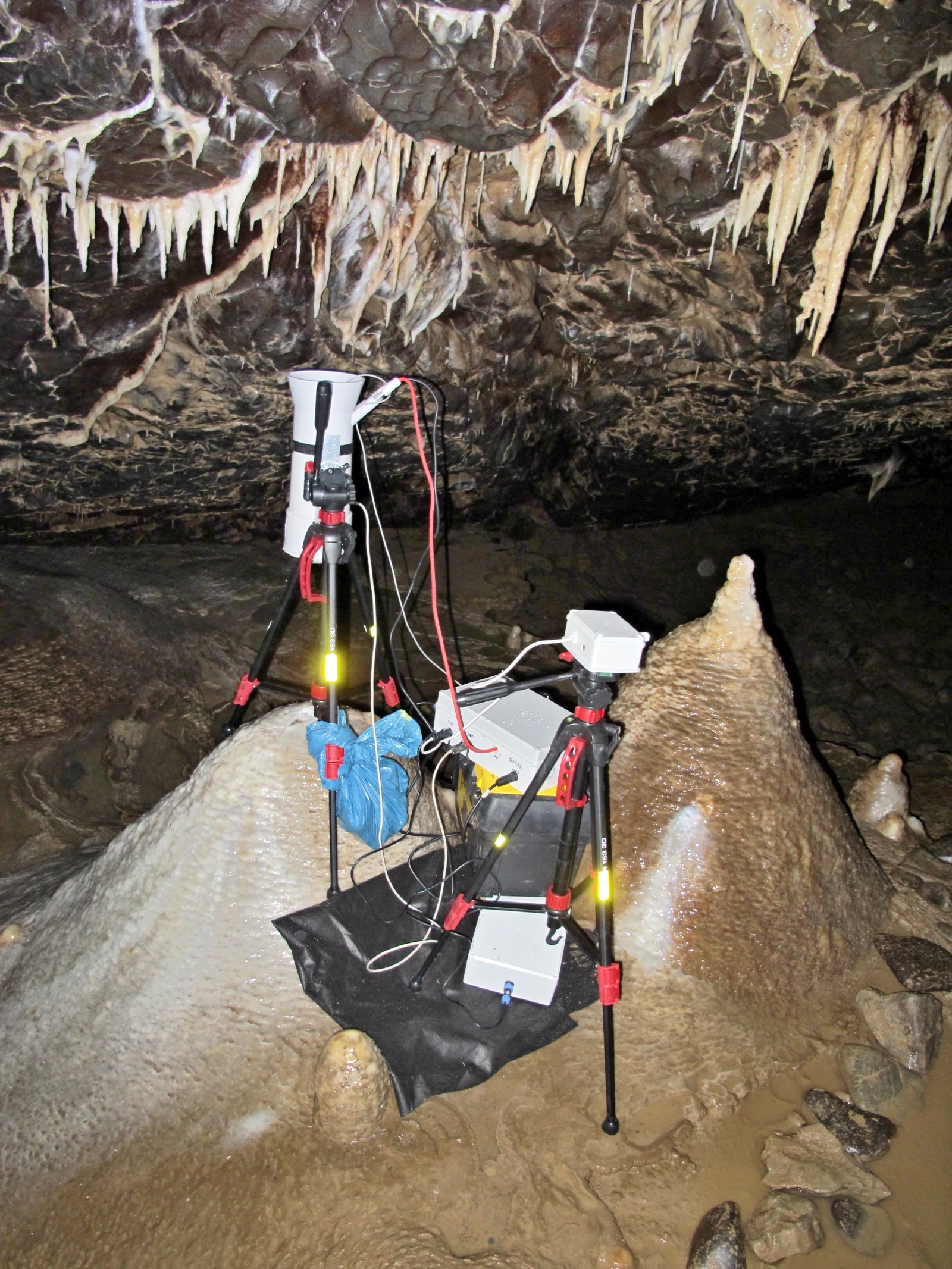
Leader: Ing. Zdeněk Roubal, Ph.D.
The research group of the laboratory has been involved in monitoring environmental variables for a long period. Especially in caves, to monitor parameters important for speleotherapy. In addition to this main focus, questions of human influence on the cave environment and the examination of phenomena between the earth’s surface and the underground spaces are also studied. This is also very topical in terms of groundwater quality. Researchers of the group can design and built a necessary unique custom instrumentation for above mentioned purposes.
Main research activities:
- Development of a methodology for the measurement of light air ions
- Correlation between aerosols and light air ions
- Monitoring cave parameters that affect the success of speleotherapy
- SZABÓ, Z.; ROUBAL, Z.; KADLEC, R.; PRACNÝ, P.; LANG, M.: Cave drip meter with data logger. Amateur cave. (functional sample)
- ROUBAL, Z.; SZABÓ, Z.; KADLEC, R.: Soil surface CO2 meter Amateur cave. (functional sample)
- TJ04000064, Evaluation of the influence of surface conditions on the cave environment, https://starfos.tacr.cz/en/projekty/TJ04000064
Main research results – publications
- FAIMON, J.; BALDÍK, V.; ŠTELCL, J.; VŠIANSKÝ D.; REZ J.; PRACNÝ, P.; NOVOTNÝ, R.; LANG, M.; ROUBAL, Z.; SZABÓ Z.; HADACZ, R. Corrosion of calcite speleothems in epigenic caves of Moravian Karst (Czech Republic). Environ Earth Sci, 2024, vol. 83, no. 184. https://doi.org/10.1007/s12665-024-11449-w
- ROUBAL, Z.; BARTUŠEK, K.; SZABÓ, Z.; DREXLER, P.; ÜBERHUBEROVÁ, J. Measuring Light Air Ions in a Speleotherapeutic Cave. Measurement Science Review, 2017, vol. 17, no. 1, p. 27-36. ISSN: 1335-8871. https://doi.org/10.1515/msr-2017-0004
- ROUBAL, Z.; GESCHEIDTOVÁ, E.; BARTUŠEK, K.; SZABÓ, Z.; STEINBAUER, M.; ÜBERHUBEROVÁ, J.; LAJČÍKOVÁ, A. Evaluating the Parameters of a Systematic Long-Term Measurement of the Concentration and Mobility of Air Ions in the Environment inside Cisarska Cave. Atmosphere, 2021, vol. 12, no. 12, pp. 1-31. ISSN: 2073-4433. https://doi.org/10.3390/atmos12121615
Biomedical imaging and image analysis | BioImage_BUT
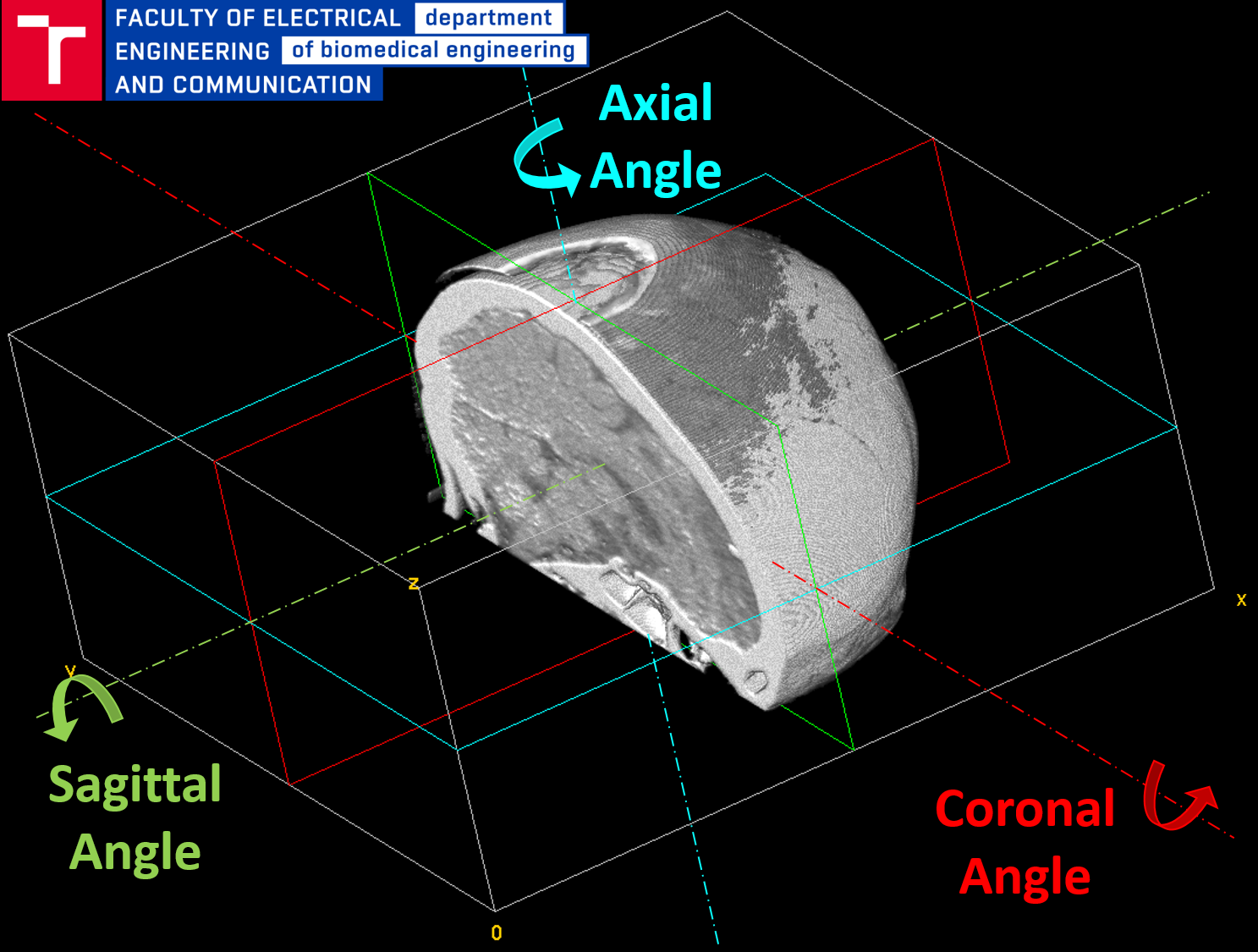
Leader: Ing. Roman Jakubíček Ph.D.
Group website: https://www.ubmi.fekt.vut.cz/en/biomedical-imaging-and-image-analysis-bioimagebut
We develop advanced software tools for various biomedical images, enabling detailed analysis and processing. The group focuses on developing complex algorithms for the analysis and processing of medical imaging data, such as CT and MR, to support medical diagnostics. Additionally, we specialize in capturing and analyzing ophthalmological data, particularly retinal images, and in analyzing images from microscopic techniques. Our activities include theoretical research, the creation of new algorithms, their implementation, and clinical testing in collaboration with major international and national institutions.
Main research areas:
- Development of complex algorithms for processing and analyzing tomographic data
- Creation of artificial intelligence tools for advanced image analysis
- Design of methodologies and implementation of support systems for medical diagnostics
- Automation of routine processes in image data analysis
Nanogroup: LabSensNano
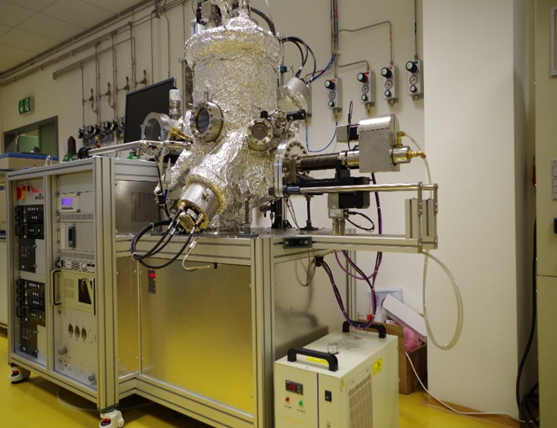
Leader: Assoc. Prof. Jaromír Hubálek
Group website: http://www.umel.feec.vutbr.cz/labsensnano/
The laboratory experts examine the applicability of nanotechnologies in both general sensorics and the development of sensors of various quantities. The corresponding work involves the designing of not only microsensors to detect gases via nanoparticles but also nanostructured and functionalized electrodes to be employed in electrochemical sensors and biosensors. Other investigated subjects prominently include advanced techniques for the diagnostics and subsequent analysis of substances that find use in medicine.
Major 4-year outputs:
- A technique to allow the processing of a signal from a bolometer (bolometer array) and an electronic system to perform the task: the relevant patent has been put into practice abroad.
- A miniature bolometer membrane with increased absorption and a procedure to form a bolometer absorption layer: the relevant patent has been put into practice abroad.
- A 100-pixel MEMS with bolometers.
Processing of biomedical signals

Group website: https://www.utko.fekt.vut.cz/en/processing-biomedical-signals
We are researching new approaches to advanced analysis of a wide range of diseases and disorders, such as Parkinson's disease, Lewy body dementia, epilepsy, developmental dysgraphia, oncological diseases, cardiovascular diseases, etc. This research combines methods of signal processing (image, speech, accelerometric, etc.), machine learning, statistics and the Internet of Things.
Main research activities
- Medical image processing
- Reconstruction of magnetic resonance imaging (MRI) images and sequences, perfusion analysis of oncological diseases
- Processing of speech, writing, and other time series, including prediction
- Segmentation and measurement of geometric parameters in image sequences
- Quantitative analysis in pathology
- Supportive diagnosis and monitoring of disorders/diseases
- Data science
- Health 4.0
Main research results
- PULIDO, M.L.B; HERNANDEZ, J.B.A.; BALLESTER, M.A.F.; GONZALEZ, C.M.T.; MEKYSKA, J.; SMÉKAL, Z. Alzheimer's disease and automatic speech analysis: A review. EXPERT SYSTEMS WITH APPLICATIONS, 2020, vol. 150, no. 1, p. 1-19. ISSN: 0957-4174. (https://www.sciencedirect.com/science/article/pii/S0957417420300397)
- KLOBUŠIAKOVÁ, P.; MEKYSKA, J.; BRABENEC, L.; GALÁŽ, Z.; ZVONČÁK, V.; MUCHA, J.; RAPCSAK, S.; REKTOROVÁ, I. Articulatory network reorganization in Parkinson's disease as assessed by multimodal MRI and acoustic measures. PARKINSONISM & RELATED DISORDERS, 2021, vol. 84, no. 1, p. 122-128. ISSN: 1353-8020. (https://www.sciencedirect.com/science/article/pii/S1353802021000535)
- BRABENEC, L.; KLOBUŠIAKOVÁ, P.; MEKYSKA, J.; REKTOROVÁ, I. Shannon entropy: A novel parameter for quantifying pentagon copying performance in non-demented Parkinson's disease patients. PARKINSONISM & RELATED DISORDERS, 2022, vol. 94, no. 1, p. 45-48. ISSN: 1353-8020. (https://www.sciencedirect.com/science/article/pii/S1353802021004442)
- MEZINA, A.; GENZOR, S.; BURGET, R.; MYŠKA, V.; MIZERA, J.; OMETOV, A. Corticosteroid Treatment Prediction using Chest X-ray and Clinical Data. Computational and Structural Biotechnology Journal, 2023, vol. 24, no. 12, p. 53-65. ISSN: 2001-0370. (https://www.sciencedirect.com/science/article/pii/S2001037023004713)
- MIZERA, J.; GENZOR, S.; SOVA, M.; STANKE, L.; BURGET, R.; JAKUBEC, P.; VYKOPAL, M.; POBEHA, P.; ZAPLETALOVÁ, J. The effectiveness of glucocorticoid treatment in post-COVID-19 pulmonary involvement. Pneumonia, 2024, vol. 16, no. 1, p. 1-10. ISSN: 2200-6133. (https://pubmed.ncbi.nlm.nih.gov/38311783/)
- KOVÁČ, D.; MEKYSKA, J.: Articulatory decay analysis; Vocal Tract Resonances Analysis Software. online. URL: https://github.com/BDALab/Articulatory_decay. (software)
- GALÁŽ, Z.; MUCHA, J.; ZVONČÁK, V.; MEKYSKA, J.: HandwritingFeatures; Handwriting Features. online. URL: https://github.com/BDALab/handwriting-features. (software)

Cooperation with industry partners
Do you solve a problem and need a help or partner?
Ask our experts. We can help you!
More about cooperation